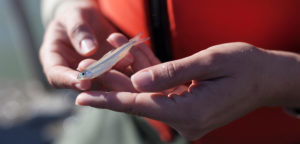Over the years, a lot of attention has been paid to declining salmon and trout populations in the Bay Area. But in the meantime, the Pacific lamprey has been overlooked. Considered an “uncharismatic” species, Pacific lamprey have round, elongated bodies that are smooth and slimy to the touch. Lamprey are anadramous, meaning they are born from eggs laid in freshwater streams, migrate out to the ocean, and return to fresh water as mature adults to spawn. In their oceanic phase, some adult lamprey attach themselves to other fish and feed off them parasitically. Like salmon, lamprey require healthy riparian habitat in which to spawn and are susceptible to the loss of wetlands and side channels that results from common agricultural and urban development practices. That’s why 11 conservation organizations, including the Center for Biological Diversity in Oakland, recently petitioned the U.S. Fish & Wildlife Service to designate four lamprey species—the Pacific, river, western brook, and Kern brook—as threatened or endangered under the federal Endangered Species Act. While all four species could once be found in waterways of the Bay Area, the Pacific lamprey were the most abundant, with populations in Walker and Lagunitas Creeks in Marin County, Walnut Creek in Contra Costa County, the Napa River and Sonoma Creek in the North Bay, and Alameda Creek and Coyote Creek to the south. To learn more, contact Jeff Miller of the Center for Biological Diversity at (510) 841-0812.
Archive




